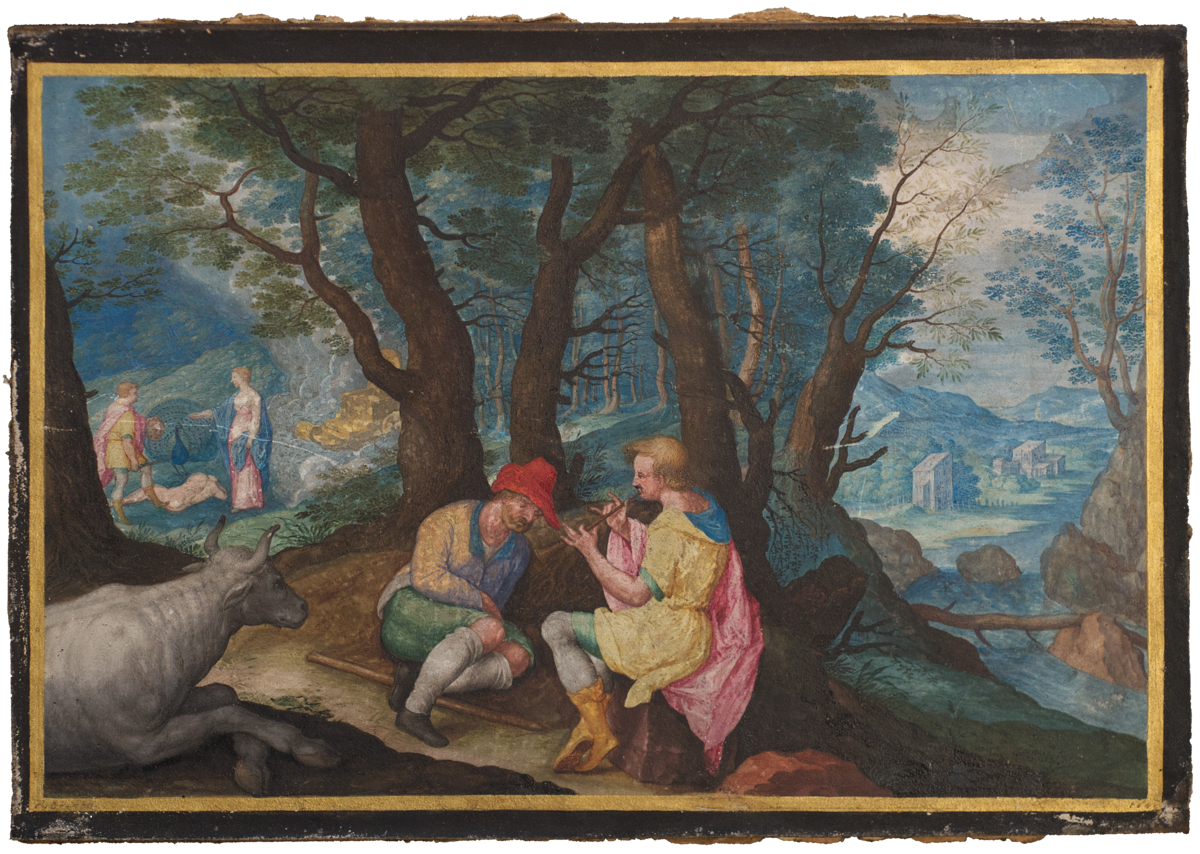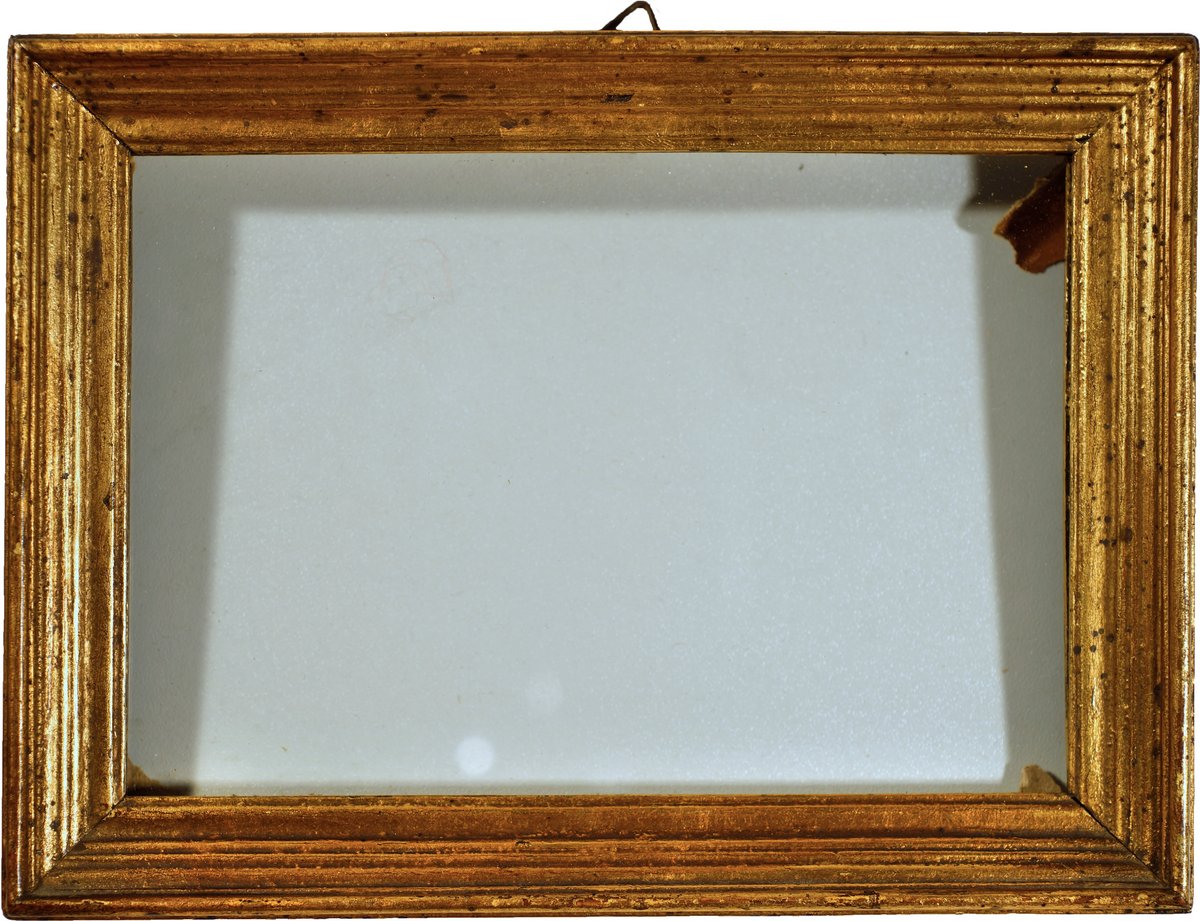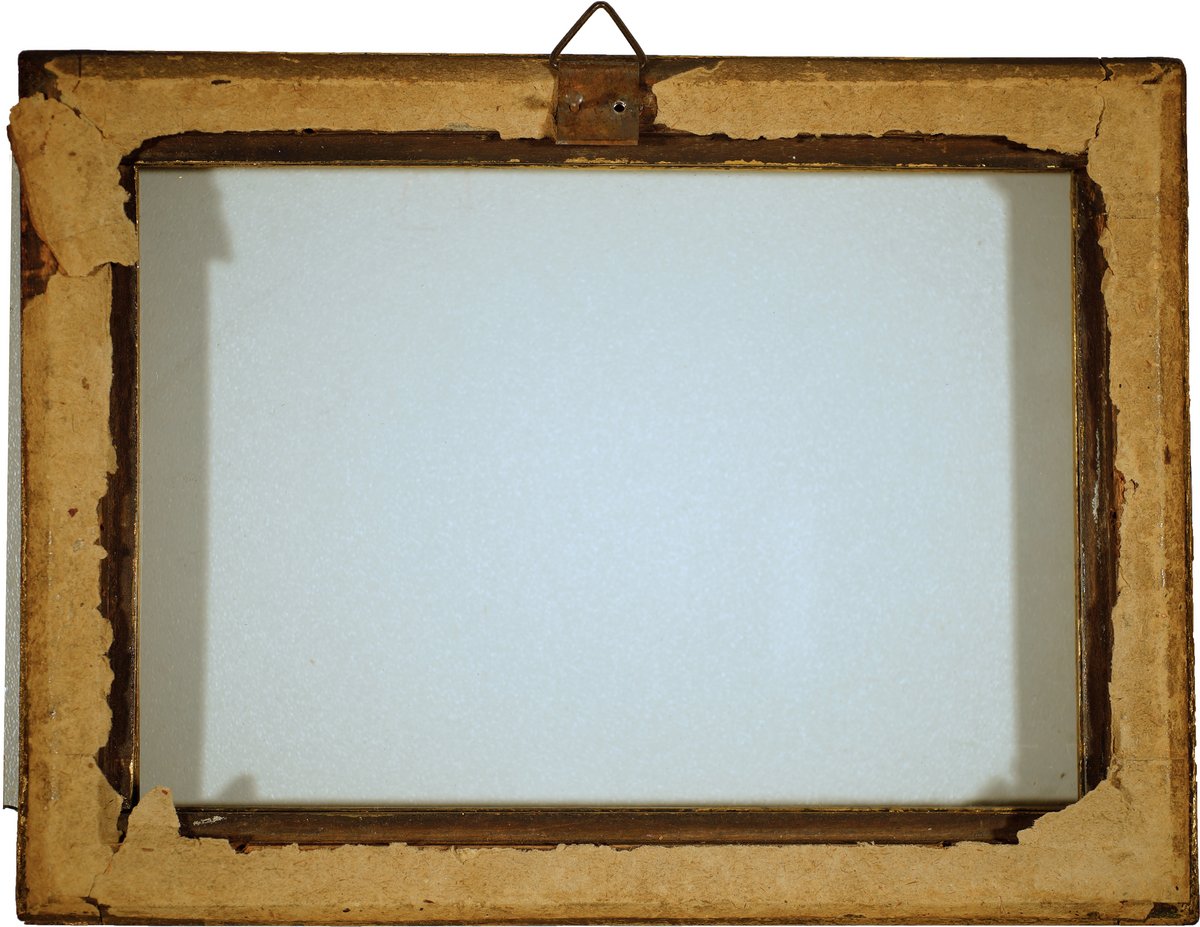
United Perspectives: A Miniature Frame Examined By Two Disciplines
A project by Elisa von Minnigerode and Katja Lorenz
At the beginning of her practical semester at the Stuttgart Academy of Fine Arts (ABK), the opportunity arose for Elisa von Minnigerode to collaborate with Katja Lorenz from the Conservation and Restoration of Paintings and Painted Sculptures course. Through the mediation of Dr Tilly Laaser, the ABK had received a miniature by German miniature painter Friedrich Brentel the Elder (1580-1651) from 1642 for examination. With the miniature came a decorative frame with pull-out glass. The aim of this collaboration was to classify and assess the frame by combining art historical and conservation methods. The interdisciplinary approach united the perspectives of the different disciplines and thus not only enriched the discussion but also broadened the variety of methods in looking at the object.
A White Cow And A Sleeping Giant: The Iconography
The privately owned miniature depicts a scene from Ovid's Metamorphoses: Jupiter had fallen in love with the beautiful Io, resulting in the wrath of the jealous Juno. To protect her, Jupiter transformed his beloved into a white cow. Juno, however, learning of this ruse, now had Io guarded by the hundred-eyed giant Argos. Jupiter sent Mercury, who devised a ruse to free Io. With his flute playing he put the giant to sleep and cut off his head. The miniature shows exactly this climax of the action in the centre of the picture: Argos, here in the form of a human shepherd with a prominent red hat, has already closed his eyes and is slumbering while Mercury plays his melody on the flute. To the left of them, Io, in the shape of the white cow, is watching the lulling to sleep. The action is completed by a simultaneous scene in the background of the picture. Here Mercury, wearing the same clothes as in the foreground, has already cut off the giant's head and is holding it in his left hand. The giant Argos lies headless and naked at Mercury's feet. Opposite Mercury, Juno can be seen, recognisable by her attribute, the peacock, stretching out her hand towards Argos' head. The scene is embedded in a forest landscape. Towards the right edge of the picture the group of trees ceases, revealing a view of mountains and buildings, in front of which a river runs to the lower edge of the picture.
The Frame
In addition to the fine painting technique, the miniature was also distinguished by the accompanying decorative frame, in which a glass pane could be pulled out from the side. It was assumed that this decorative frame belonged to the historical inventory of the miniature. While researching her bachelor's thesis, Katja Lorenz was able to learn from the owners that the current glass pane was only inserted in the middle of the 20th century and that none existed at that time. However, this still left fundamental questions unanswered: Was there already originally a glass inserted? Or is it possible that there was no glass pane at that time, but that another material was inserted? And how can it be explained that the miniature has a frame that allows a pane of glass or a similar plate to be inserted?
On the one hand, the special frame construction could be explained by conservation reasons. It is possible that a glass pane was used to protect the painting from dust and light. Equally, it could have been intended as protection against mechanical effects. At the same time, however, there is an explanation specifically aimed at what is depicted:
It is conceivable that instead of a glass panel, another picture panel was embedded, which completed the depicted object with an independent picture element. Especially from the 15th and 16th centuries, miniatures are still known today that were deliberately equipped with a special frame. Painted sliding covers made of wood were embedded in these frames. These were thus deliberately used to create a further level of meaning. For example, these picture panels referred to the commissioner of the painting with their coat of arms, or a religious motif was supplemented by another scene. A prominent example from Albrecht Dürer's hand is the portrait of Hieronymus Holzschuher. Here the special frame is provided with a wooden sliding lid on which the family coat of arms of the sitter can be seen:
The lid embedded in the frame in this example thus functions as a supplement to the portrait and also challenges the beholders into an active reception. The small-format miniature must be taken in the hand and the sliding lid pushed to the side so that the portrait becomes visible. Did the Brentel miniature also have a family coat of arms inset into the frame on a panel, perhaps with reference to Ovid's Metamorphoses? Of course, what was depicted here and the protection of the painting went hand in hand: a painted picture panel would have protected Brentel's fine painting from light and further, just as it would have complemented the painting with another picture.



